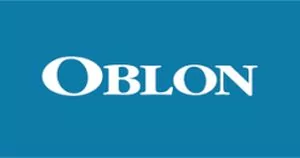Restem, LLC, v. Jadi Cell, LLC (see the Resources link below for a copy of the Opinion)
Jadi Cell, LLC ("Jadi Cell") is the owner of US Patent No. 9,803,176, which is directed to stem cells with specific markers ("the Claimed Cells"). The Claimed Cells are obtained from the subepithelial layer ("the SL") of mammalian umbilical cord tissue using a two-step process: (1) placing the SL in direct contact with a tissue culture growth substrate and (2) culturing the SL.
Claim 1, a product-by-process claim, is representative:
1. An isolated cell prepared by a process comprising:
placing a subepithelial layer of a mammalian umbilical cord tissue in direct contact with a growth substrate; and
culturing the subepithelial layer such that the isolated cell from the subepithelial layer is capable of self-renewal and culture expansion,
wherein the isolated cell expresses at least three cell markers selected from the group consisting of CD29, CD73, CD90, CD166, SSEA4, CD9, CD44, CD146, or CD105, and
wherein the isolated cell does not express NANOG and at least five cell markers selected from the group consisting of CD45, CD34, CD14, CD79, CD106, CD86, CD80, CD19, CD117, Stro-1, or HLA-DR.
Restem, LLC ("Restem") sought inter partes review (IPR), arguing that the claimed steps of placing the SL in direct contact with a growth substrate and subsequently culturing the SL were anticipated by multiple prior art references. Thus, according to Restem, the isolated cells were inherently anticipated. The Board found that three different references disclose placing umbilical cord tissue (which includes the SL) in environments that foster cell culture and replication, thus teaching the two-step process in claim 1. Nevertheless, the Board concluded that these prior art processes did not necessarily produce cells having the claimed expression and non-expression profile.
Restem appealed to the Federal Circuit, which affirmed the Board. The court, quoting precedent, stated that a product-by-process claim is one where the product is defined at least in part by the process by which it is made. The court emphasized that in determining validity of a product-by-process claim, the focus is on the product, not the process, as an old product is not patentable even if made by a new process. The court specifically found the Board's factual findings, that cell marker expression can be influenced by various factors and conditions surrounding the culturing process, to be persuasive. The court also noted that the prior art was silent about cells having the claimed expression and non-expression profile, and that Restem had not shown that the previous methods necessarily produce the claimed cells. As a result, the product was not anticipated even though the process was disclosed by prior art.
In a different argument, Restem argued that the term "isolated cell" should mean "one or more cells isolated from the SL of a mammalian umbilical cord" based on express lexicography in the specification. However, the court found that the Board had implicitly construed the term "isolated cell" to mean "a cell population," and found no problem with such a construction. The court noted that cell marker analyses are undisputedly conducted on cell populations, not individual cells, and further that the specification consistently described the invention as a "cell population." Going further, the court stated that during prosecution, the Applicant had acquiesced to the Examiner's repeated characterization of the "isolated" cells as being a "population of isolated cells," and "population of cells." Thus, the court ruled that "isolated cell" had been defined as "population of cells" during prosecution.
In general, applicants should take care when drafting product-by-process claims, since the validity of the claim rests on the validity of the product, and the process cannot generally confer patentability unless it causes a difference in the product itself. However, in this case, Jadi Cell's product-by-process claim survived even though the process was disclosed by prior art, based on "conditions" and "factors" that were not expressly claimed.
Furthermore, this case shows that applicants should pay close attention to Examiner statements made during prosecution, as such statements can be used in future litigation to affect the meaning of the claims. Applicants should make sure to clarify on the record if they disagree with an Examiner's characterization of the claim language.
The content of this article is intended to provide a general guide to the subject matter. Specialist advice should be sought about your specific circumstances.


